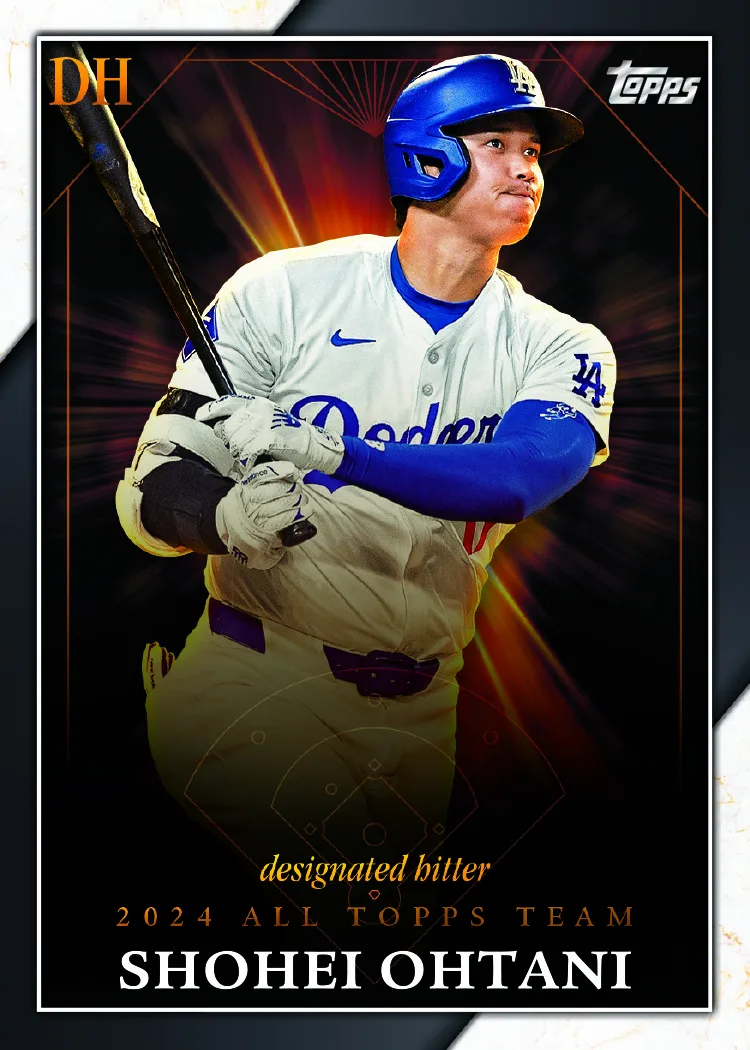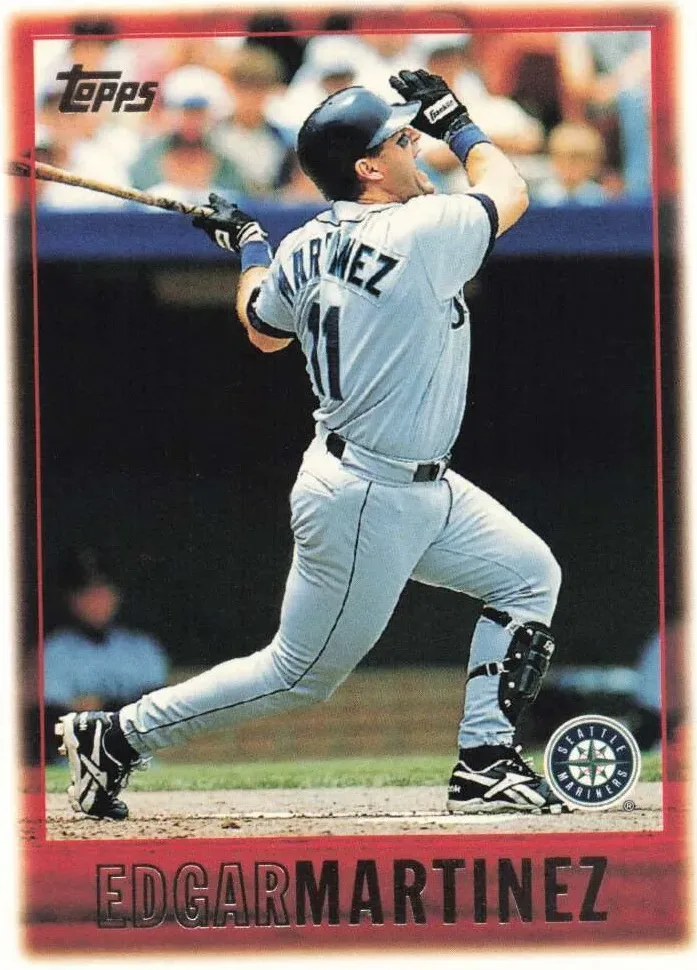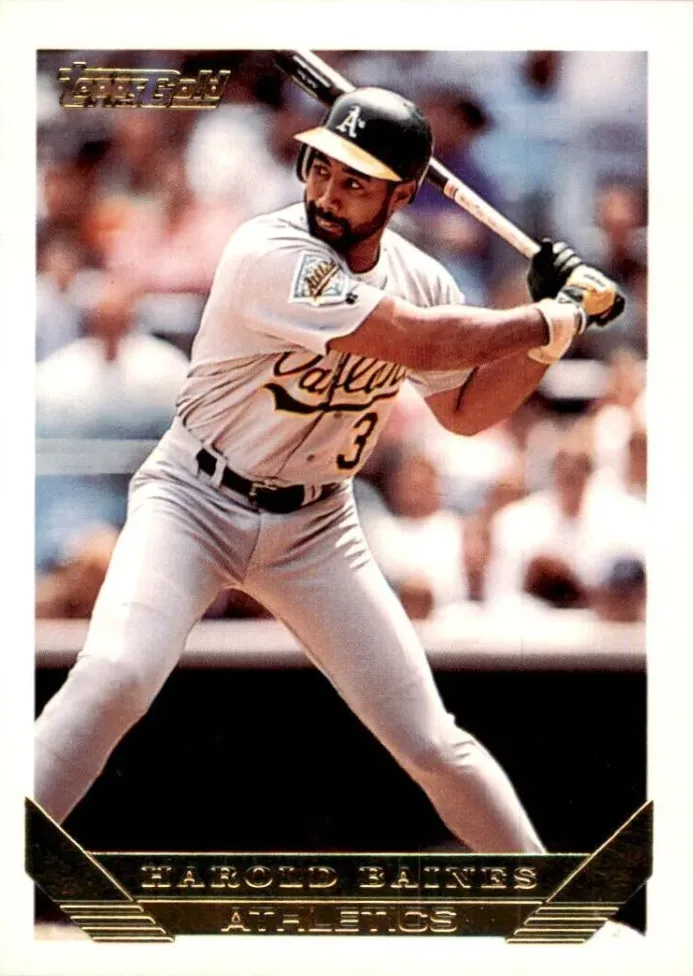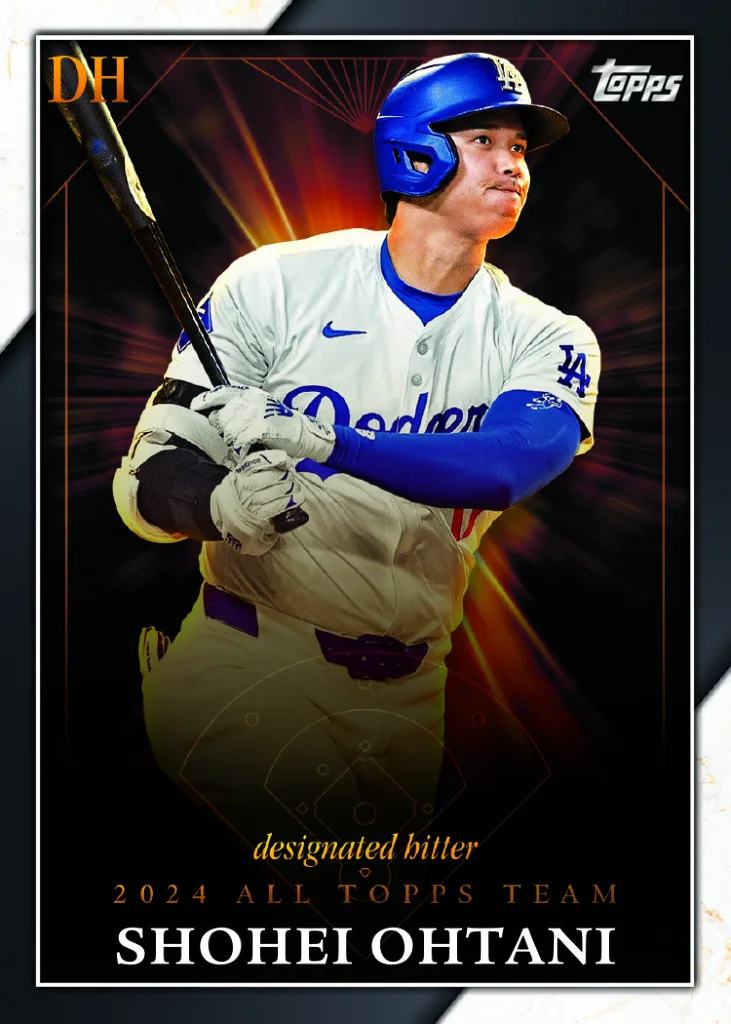
The Story of Baseball’s Most Curious Position
Baseball’s designated hitter rule first took effect (in the American League) in 1973, so it was on the 1974 Topps cards that some players were time listed as “DH” for the first where their defensive position would normally appear. That year, Orlando Cepeda, Tony Oliva, and Gates Brown were featured on DH cards. Notably, Topps also decided to list some players as DH combos, so Harmon Killebrew, Ron Blomberg, and others were listed as 1B-DH, or DH-1B.
It was a rule made for a dual purpose: keep celebrated aging hitters in the lineup while sparing fans from having to watch hapless pitchers flail at sliders in the nine-spot. But something curious happened. The DH position created a new archetype, and quickly started to define careers.
A new type of player emerged. No glove, no defensive instinct, no excuses. Just pure offense. The bat was the only tool, and the job was clear: hit, hit again, and hit with power. Against the laments of a dwindling number of purists, the DH position is certainly here to stay.
The cards discussed below honor those hitting specialists. These are cards that officially list the player as a DH on the front or back. In baseball, as in The Hobby, position matters.
1997 Topps Baseball #95 Edgar Martínez
There’s no meaningful conversation about DHs without Edgar Martínez. He was arguably the first pure designated hitter inducted into the Hall of Fame, and he did it with style: a career .312 batting average, .418 OBP, and a sublime swing.

Earlier cards peg him as a third baseman, but by the time of the 1997 Topps set, his title was finally made official: designated hitter. The fade-frame design of that year sets off the image of Edgar mid-swing, eyes locked on an outgoing blast. It’s a dignified card, like the player himself. But collectors know this is the card that quietly acknowledges his true place in baseball history.
2010 Topps Chrome® Baseball #128 David Ortiz X-Fractor
Big Papi was made for the role. And the Red Sox? Made for Big Papi. The man turned postseason pressure into a personal showcase. From 2003 to 2016, he redefined what it meant to be a franchise icon while hardly ever picking up a glove.
For a spectacular but still attainable Ortiz card, check out the 2010 Topps Chrome #128 X-Fractor. Listed at DH, the card captures him deep in his power-hitting prime. It’s a staple for any collector building a DH-themed lineup.
1993 Topps Gold Baseball #380 Harold Baines
Harold Baines was the prototype for the modern DH: a quiet slugger who never made headlines, just line drives. His Hall of Fame induction may have caused debate, but his longevity was certainly an argument in his favor. Baines logged nearly 1,700 games at DH — more than anyone not named Ortiz.

The 1993 Topps Gold #380 card comes from his stint with Oakland. It’s simple — just Baines doing what he always did: standing in, ready to rake. He’s listed as “DH-OF,” but he was primarily tasked with hitting by that point in his career. For Baines, it was a home.
2006 Topps Chrome Black Baseball #94 Frank Thomas Refractor
“The Big Hurt” probably could’ve played first base into his 40s if he’d wanted. But once the DH slot opened up, Frank Thomas became one of its most dangerous inhabitants. He hit 521 home runs in his career — and over 260 of those came while slotted at DH.
This 2006 Topps Chrome Black Refractor card lists him as designated hitter, as he was transitioning into the final act of his career. He’d go on to have a late-career renaissance with the A’s and Blue Jays, proving that his bat, not his position, was his calling card. The Big Hurt’s power never dipped, and his cardboard shows it.
2010 Topps Chrome Baseball #61 Hideki Matsui
“Godzilla” came to the Bronx from Japan with a legend already trailing behind him, and he lived up to it. Matsui’s smooth lefty swing and uncanny sense of timing made him a staple in the Yankees’ lineup for years. And by 2009, he was primarily a DH — just in time to earn World Series MVP honors.
The first card to list Matsui as a designated hitter was actually the 2010 Topps Chrome #61. By that point, he was playing for the Angels. Still, the horizontally oriented card is a great selection for those who loved Matsui’s distinctive swing.
1996 Topps Baseball #30 Paul Molitor
Molitor spent the back half of his Hall of Fame career racking up hits and defying age. He played more than 1,100 games at DH, and still stole 500+ bases in his career. That mix of speed and contact makes him one of the most versatile designated hitters in history.
The 1996 Topps #30 card lists him as a DH, and it comes from his time with the Toronto Blue Jays. The card itself has a relaxed, end-of-career vibe — nothing spectacular. But don’t be fooled. Molitor was still making pitchers pay.
2025 Topps Baseball Series 1 #ATT-3 Shohei Ohtani
When the National League officially adopted the Designated Hitter in 2022, it didn’t just mark the unofficial end of pitchers hitting — it opened the door for a player like Shohei Ohtani to redefine the role entirely. While Ohtani is still best known as a two-way superstar, by 2024 his workload had shifted heavily toward hitting, with DH becoming his everyday title.

Topps captured this evolution in sleek fashion with the 2025 Series 1 All Topps Team card #ATT-3, which lists him as DH. It’s a gorgeous, modern card with clean lines,sharp angles, and Ohtani’s picture-perfect swing frozen mid-launch. Ohtani’s 2025 Topps Holo Foil #1 is also worth a careful look.
Ohtani has proven that DH is no longer just for aging sluggers. Sometimes, it’s for the most electrifying player on the planet.
The Legacy of the DH in The Hobby
The Designated Hitter position began as an experiment. Now, it’s a legacy. For players like Edgar Martínez and David Ortiz, the DH was a platform. They turned a rulebook loophole into a Hall of Fame resume.
Topps knew how to tell the story. Listing a player as DH is a kind of badge. These are the hitters who didn’t need a glove to earn their place in the lineup, or in the hearts of collectors. So the next time you flip through your boxes or dig into a wax pack break, keep an eye out for those letters. They don’t just tell you where a guy stood — they tell you what he was born to do.